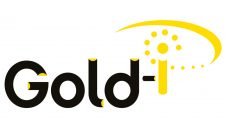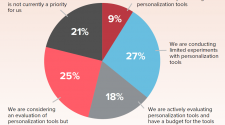At this year’s delayed SNEC show in Shanghai, larger modules with more cells were the trend, as the maturity of half-cut and multi-busbar technologies accelerates the shift in wafer sizes. Many unveiled modules rated at 600 W+, with some even beyond 700 W and 800 W.
Most new products this year feature tiling and high-density approaches, with cells cut into two or three pieces, pushing up power ratings and efficiency. Most modules based on 182 mm wafers feature 590 W, 78-cell layouts and 550 W, 72-cell layouts, peaking at 600 W. Modules based on 210 mm wafers come in a range of cell layouts. JA Solar launched an 800 W module, applying an 80-cell format in a 1/3 cut cell configuration. Trina Solar achieved 660 W in a 66-cell format. Overall, most adopted 50- to 60-cell layouts due to limitations in module length, and they can achieve a power output as high as 615 W.
| Details of 600 W+ solar products | |||||||||
| Company | Module series | Wafer size | Cell cut | Busbar | Module technology | No. of cells | Efficiency | Power output (W) | Mono/Bifacial |
| Trina | 210 | 1/2 Cut | 12 | Narrowed-spacing | 66 | 21,20% | 660 | ||
| Trina | Vertex | 210 | 1/2 Cut | 10 | Narrowed-spacing | 60 | 21,40% | 605 | Monofacial |
| Trina | Vertex | 210 | 1/2 Cut | 12 | Narrowed-spacing | 60 | 21,20% | 600 | Bifacial |
| Astronergy | Astro Twins | 210 | 1/3 Cut | 10 | 60 | 20,80% | 605 | Bifacial | |
| Suntech | Ultra X | 210 | 1/3 Cut | 9 | Tiling | 60 | 21,30% | 605 | Monofacial |
| Risen | Titan G6 | 210 | 1/2 Cut | 12 | High-density assembly | 60 | 21,20% | 615 | Bifacial |
| Risen | Titan G6 | 210 | 1/2 Cut | 12 | Narrowed-spacing | 60 | 21,20% | 615 | Monofacial |
| Risen | Titan G5.6 | 210 | 1/2 Cut | 12 | 60 | 21,40% | 605 | Monofacial | |
| Risen | Titan G5.6 | 210 | 1/2 Cut | 12 | 60 | 21,20% | 600 | Bifacial | |
| DMEGC | 182 | 1/2 Cut | 12 | Tiling | 78 | 600 | Monofacial | ||
| Ht-Solar | Tarzan | 182 | 1/3 Cut | 10 | Plate-coupling | 80 | 21,71% | 600 | Monofacial |
| Tongwei | 210 | Shingling | 21,90% | 760-780 | Monofacial | ||||
| JA Solar | Jumble Blue | 210 | 1/3 Cut | 11 | 80 | 800 | Monofacial | ||
| Huansheng | 210 | Shingling | 66 | 21,10% | 635 | Bifacial | |||
As wafer sizes go bigger, this year marked the fastest shift in module power ratings – from between 400 W and 440 W last year to the 500-600 W+ range today. Rapid changes in size, power output, and layout pushed equipment suppliers to improve compatibility. ATW (Autowell), for instance, unveiled a brand-new machine compatible with cell sizes from 156 mm to 210 mm. Meanwhile, XN Automation launched a machine that is compatible with different cell sizes and works well with 1/2, 1/3, and 1/4 cut-cells without losing production efficiency. The compatibility of different sizes and techniques plays a key role in developing new PV module designs.
Bifacial boost
Bifacial drew significantly more attention this year. As an estimated 30% to 40% of Chinese ground-mounted PV projects in the second half of this year will use bifacial modules, the real production of such panels will continue to ramp up over this year and next.
The concept of building-integrated photovoltaics (BIPV) came under the spotlight due to decreases in available land for PV plants, Europe’s high requirement on building energy consumption, and Tesla’s Integrated Solar Roof system. The 2020 SNEC saw more BIPV products than last year, with appearance, color variety, reliability, endurance, and lead-free being the major trends. Unlike before, when manufacturers mainly showcased thin-film modules, there were more silicon BIPV products this year. To drive efficiencies up and costs down, integrating perovskite will become one option in the future.
Jinko and Longi both launched BIPV modules at this year’s show. Longi has officially entered the BIPV market with the launch of the “LONGi Roof” brand. It is targeted at C&I projects. Jinko, on the other hand, introduced colored BIPV products featuring colors such as black, blue, purple, red, and green.
N-type tech
Most manufacturers focused on p-type PERC technology to catch up with the rapid shift in sizes. N-type technology was less discussed this year. The exhibitors of n-type modules stayed pretty much the same from last year, with Risen, Tongwei, GS Solar, Jinergy, Akcome, Astronergy, and Suntech displaying HJT modules. Trina, which exhibited TOPCon modules last year, launched HJT modules based on 210 mm wafers. This year saw fewer TOPCon modules, with Jolywood and Jinko showcasing such products.
Cell efficiencies were initially predicted to bottleneck this year. But the advancement in multi busbars and PERC+ technologies has brought the efficiency of mono PERC cells beyond 22.2% recently. Products exhibited this year even feature efficiencies as high as 22.6%. This has also slowed down the capacity ramps of n-type cells, whose average efficiency remains around the 23% to 24% mark.
Rising prices
Cell, module, and equipment manufacturers have all demonstrated their compatibility with different sizes. As cell size and module power outputs grow rapidly, whether delivery and installation costs, yield rates, bill of materials, and applications in PV plants can catch up should be of concern. The 600 W+ modules showcased this year will remain in the nascent stage until the next SNEC show, as it will take time for PV glass capacity ramps to catch up with the larger format trend. PV InfoLink projects that M6 will remain the mainstream size over the second half through early 2021, and 182 mm and 210 mm formats will slowly grow their market share over the period.
On the price side, explosions at Xinjiang-based polysilicon facilities have caused upstream prices to surge. The module segment suffered the most, because of limited increases in module prices. Quite a few Tier-1 module makers have stopped outsourcing or have even lowered their utilization rates in response to the upward price trend in the upstream segments. Consequently, some projects were unable to obtain enough modules, sparking further chaos in the module segment.
Quotes for modules rose to CNY 1.6-1.7/W ($0.2-0.215/W) during SNEC. Some price quotes for July to August also increased for overseas markets. Although bid prices for large project procurements unveiled recently increased to CNY 1.5-1.6/W, not many orders with higher pricings have been signed. If modules are priced higher than CNY 1.6/W, unsubsidized projects as well as some auction projects in China may opt to postpone grid-connection until next year. Moreover, as quite a few foreign markets have extended grid-connection deadlines due to Covid-19, there is a mismatch between buyer and seller expectations. Demand in the last three months of the year is therefore uncertain.
By Corrine Lin, chief analyst at Taiwan-based PV InfoLink. She works on market conditions, spot market prices, capacity expansions, and production technologies across the supply chain.

















